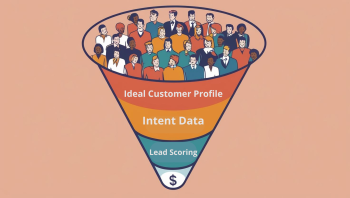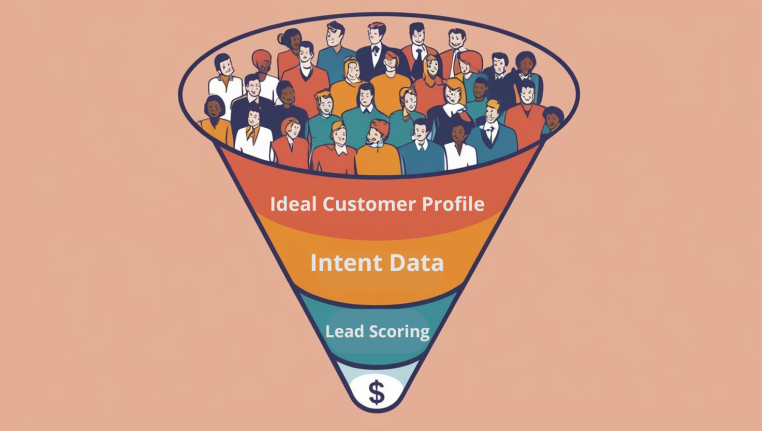Retail Marketing Trends in 2025

Table of Contents
Retail is changing—not quietly, but forcefully, openly, and it's rewriting the rules for how brands interact with consumers. As we become comfortable with 2025, the retail marketing landscape is not only transforming—it's accelerating. Technology, shopper behavior, and economic realities are all disrupting the ways in which products are being marketed and sold, and retailers are being compelled to adapt quickly or risk falling behind.
But this is not a story of disruption for the sake of disruption. It's one of clarity. The most eloquent message of 2025 is that customers now want more than transactions. They want experiences—personal, responsive, convenient, and even emotional. And thus retailers are being pushed to rethink how they tell stories, build loyalty, and design journeys that are as seamless as they are smart.
This is how the most forward-thinking retail marketers are entering that space—and what's defining this new age of retail.
Personalization Is Finally Personal
Personalization is no longer a buzzword—now it's an expectation. And in 2025, it's not about greeting by name or recommending a similar product. It's predicting intent, observing real-time behavior, and responding with relevance at every touchpoint.
Consumers are using AI-driven solutions to not just view data but to understand context. A consumer browsing sneakers after 9 p.m. on a smartphone may see an entirely disparate product configuration than a consumer browsing at mid-day from a desktop. Geo-targeted promotions, dynamic pricing based on demand in real time, and adaptive content are no longer cutting-edge—they're the norm.
And still, it is not about being overly automated. The ones that make it are those that manage to integrate this smart targeting with a human element. They understand when to be silent, when to follow up, and when to deliver actual value and not another nudge to buy.
Discovery Over Search
Search is still required, yet consumers in 2025 want more to find than to dig. Rather than typing in keywords and then having to sift through dozens of possibilities, they want the tenderness of hand-curated, editorial-standard experiences that guide them smoothly through the world of a brand.
This has opened up a new interest in visual storytelling solutions like interactive lookbooks, video catalogues, and interactive brand hubs. These are not virtual brochures—they're creative ecosystems for amusing, educating, and finally converting.
To showcase their products in rich, image-heavy terms has become vital with technology that empowers retailers. More and more, brands are opting to present collections as themes, seasons, or moods instead of presenting them linearly by product, moving towards more holistic, magazine-style experiences.
In fact, one of the most effective ways to lean into this shift is to get started with digital catalogs that let you create shoppable narratives your audience actually wants to engage with.
These formats blend lifestyle content with frictionless shopping features. Instead of making customers hunt through your store, they allow you to bring your store directly to them—visually, thoughtfully, and with clear intent.
Content-Led Commerce
The content-commerce wall continues to crumble. Today's retail marketing strategies are increasingly content-driven—no longer just for SEO, but for community-building, trust, and long-term loyalty.
By 2025, product descriptions are being replaced by product stories. Brief video, customer-generated content, and behind-the-scenes narrative are being made more integral directly within product pages. Influencer campaigns are also evolving away from the "sponsored post" format and becoming more integral to product discovery platforms, gift guides, and editorial reviews.
This change is not just about appearance. It is the transition from "buying products" to "buying into brands." And what bridges that gap is content—true, useful, inspiring content.
Those retailers who are succeeding with this aren't trying to dominate all platforms. Instead, they're positioning themselves to create content that is in context and aligned with their customer's journey—whether through a well done TikTok series or a beautifully crafted digital publication.
Phygital Experiences That Stick
Yes, the virtual world is growing, but physical has not been erased—just remapped. In 2025, "phygital" is more than buzzword alert. It's a marriage of physicality and digital intelligence.
We’re seeing more interactive displays, mobile-first store layouts, and in-store touchpoints that sync with a shopper’s online history. Retailers are using QR codes, AR mirrors, and NFC tags to connect offline browsing with online behavior. And customers love it—because when it’s done right, it feels like magic.
But the key is to make it seamless. The shop isn't a separate channel anymore—it's simply another part of the same brand experience. What you start out in the online space, you should be able to carry through offline—and vice versa. That means consistency of offer, design, tone, and experience. And that means investment in systems that can manage that kind of continuity.
The Rise of Intentional Shopping
Trendiest of all for 2025, though, is the rise of "intentional shopping." Consumers are more mindful of what they buy, where they buy it, and why. They're asking deeper questions about sustainability, ethics, sourcing, and community impact. They're choosing brands not so much on price or convenience but on purpose.
As a result, retail marketing is being pushed into more genuine, transparent, and storytelling-oriented terrain. Advertisements are giving way to values-based communications. Campaigns that respect purpose, community, and authenticity are outperforming generic promotions.
For marketers, this requires a shift in mindset. It's no longer enough to market what you're offering—you need to market what you stand for. And more importantly, you have to mean it.
Retailers who do this well will earn more than just transactions—they'll earn long-term trust. And in a world of such vast choice, trust is the single best differentiator.
Where It All Leads
The biggest shift in retail marketing is not about tech—it's about expectation. Customers expect more. More relevance, more clarity, more emotion, more intent. And that's why retail marketers must step up their game—not merely with new technology, but with more compelling story, more compelling values, and more intelligent design.
Fortunately, the technology is here. What was once a task of a large agency or internal team can now be done in a day—with drag-and-drop catalog platforms, AI-driven personalization engines, and real-time content creators operating in various time zones.
The retail marketing future is not about keeping up—it's about getting ahead with intention. Because in 2025, the brands that will thrive are the ones who didn't just react to change, but leaned into it.
Share this article



